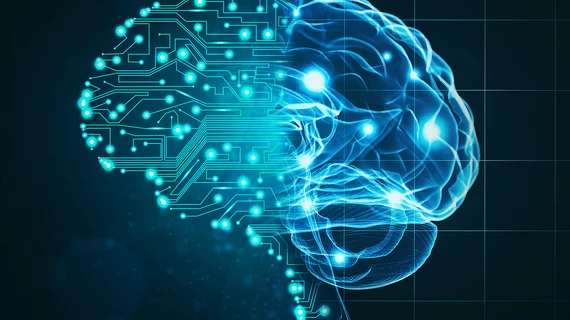What if artificial intelligence could scour the vast amounts of data within medical images to predict the future, and more specifically, future healthcare costs?
That scenario may not be far off, as researchers from the University of California San Francisco have trained deep learning to extract relevant cost indicators from chest radiographs to predict a patient’s healthcare expenditures five years out. While the estimate is a rough projection, the approach could turn imaging data into an extremely valuable commodity.
“Cost is a crucial barrier to healthcare access and cost estimation can better prepare a patient physically and psychologically,” Yixin Chen, a student at the University of Michigan Ann Arbor, said during a Monday morning session at RSNA’s annual meeting. She went on to say that currently, clinical radiologists can only extract a “handful of relevant information” from images, but this method could change that.
To create their algorithm, Chen and her colleagues used 16,533 chest radiographs from UCSF taken from more than 19,000 patients. That data was paired with the patient’s age, sex, ZIP code and total cost of care at UCSF Medical Center within five years of their exam. Four different regression and classification models were tested on a set of 1,877 images.
Overall, their approach accurately predicted a patient’s five-year healthcare expenditures while also identifying if they would fall into the top 50% of healthcare spenders. Specifically, the regression model predicted five-year expenditures with a receiver operating characteristic-area under the curve score of 0.85, mean average precision of 0.72 and F1 score of 0.77.
Chen, who won the RSNA trainee medical student research prize for the study, said the technique could be used to identify high-risk patients, which may be particularly valuable given that the top 50% of spenders account for 97% of total healthcare costs.
The results, according to Chen, have a number of limitations. For one, the study included data from UCSF Medical Center, which is only representative of patients in the San Francisco Bay Area. Therefore, the approach likely isn’t generalizable to other institutions.
Chen plans to address this going forward, and maintains chest x-rays may hold much more information than experts realize.
“The idea of predicting costs from a chest x-ray might be too simple to be true at first glance, “she said. "But you think about how radiologists can learn so much information from a patient’s chest radiograph, it makes sense to estimate how much money they are going to spend based on how sick they are.”

